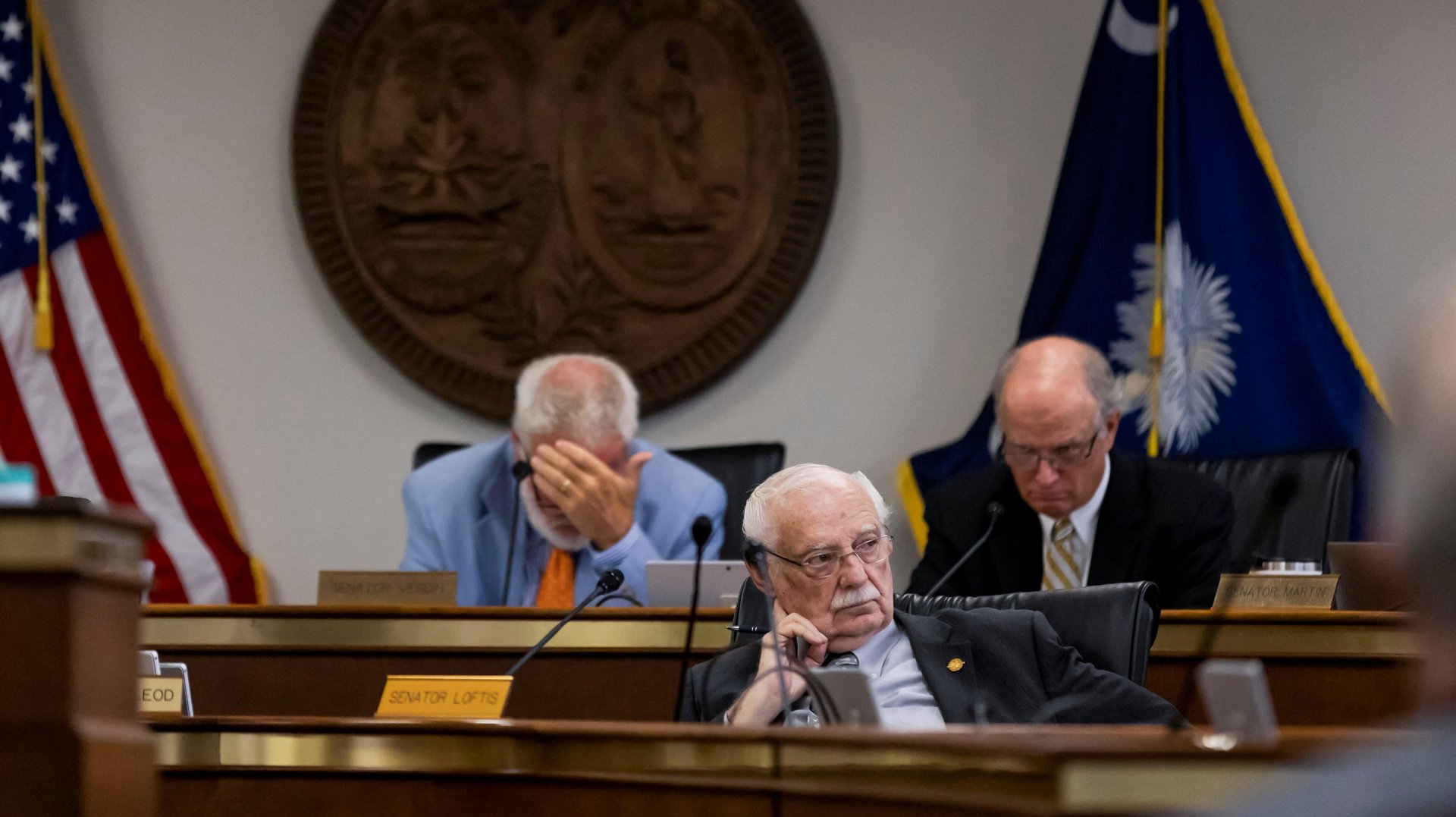A third of Americans have working-class jobs. Only 1% of state lawmakers do
Women, people of color, and the working class are underrepresented in America's state legislatures

This article is part of Unequal Representation, a project by the Observer and Quartz. Click here to see other articles in the package.
In a federal republic like the US, state lawmakers have significant power. The laws they pass dictate everything from property ownership to education—things that affect Americans’ everyday life in ways big and small.
But a trove of new data reveals state representatives are not really representative. Researchers at Duke University and Loyola University Chicago gathered detailed information about the gender, ethnicity, educational background, and career trajectories for every single state lawmaker in the country, both in state houses and senates—more than 7,000 elected officials in total.
Their database, the first of its kind, shows a wide gap between who sits in state legislatures and who they represent. For example, of the 7,239 lawmakers in the 50 state legislatures, only 81, or 1.1% held working-class jobs, according to the data. That’s compared to 30% of US adults who identified as working class in a 2018 poll.
Politicians bring their backgrounds with them into office, says Nicholas Carnes, one of the lead researchers at Duke. “The problems they pay attention to, the solutions that occur to them, and their dedication to solving different problems depends in part on who they are and where they come from,” he adds. “The shortage of people from lower-income or working-class backgrounds affects public policy on issues related to domestic and economic affairs.”
While working-class professions, like those involving manual labor or in the service industry, are underrepresented in state legislatures, others, like business owners and lawyers are overrepresented.
The makeup of state legislatures will be reconfigured after the Nov. 8 mid-term election, with a portion of the lawmakers included in the database leaving office. But the data shed light on structural barriers that have led to the long-term underrepresentation of large swathes of the US public in state government.
Here’s a look at Americans whose voices are not as loud as warranted by the size of their population:
Why are so many US lawmakers lawyers?
In Texas, only about 1% of the working population holds a job as lawyer or judge, but over 30% of the state’s legislators were in a legal profession prior to taking office. While the state is an extreme case, the pattern holds true across the country.
So why is it so in the US? Lawyers have extensive networks of wealthy individuals, which they can tap for campaign funds. And compared to other professions, it’s relatively easy for them to put their jobs on hold in order to run for office.
Overall, the lack of working-class professionals in government comes down to lack of time, job stability, and fundraising networks. Working-class jobs can be less stable, and taking off time to campaign could mean the candidate has no job to come back to if the run for office fails.
Where are the women in state legislatures?
The need for better representation goes far beyond profession. In nearly every state, women are also significantly underrepresented. Only one has a greater proportion of women in the legislature than in its population: Nevada, which has 37 women lawmakers and 26 men.
Ethnic and racial minorities don’t have enough seats
Ethnic and racial minorities are also underrepresented in every state except one. In Indiana, where Hispanics make up less than 8% of the general population, they hold 25% of the seats in the state house.
But in the rest of the country, these minorities account for a smaller share of the legislature than of the population. This includes people who are white, but identify as Hispanic.
How do you increase representation in state legislatures?
While it’s clear that poor representation is a problem for democracy, fixing it is difficult, says David Moscrop, a political theorist and author of the book Too Dumb for Democracy?
“The question is, what kind of representational diversity do we want?” he says, noting that most governments already have geographic representation built in. “Where do you go beyond that? And then you get into the tricky questions.”
Effective representation doesn’t necessarily mean a legislature whose makeup exactly mirrors the general population. Representation should be substantive, instead of just symbolic, he says, and that might mean more of a focus on equity. For example, if women are more impacted by a policy than men, should female lawmakers have a more impactful vote on the matter?
Another tricky question: How do you get candidates from marginalized groups into government? And should the solution come from governments themselves, through quotas for lawmakers with underrepresented backgrounds? Or should political parties and civil society devote extra resources, such as free child care or grants, to help them run and win?
“It’s not a given that it’s something we can do easily, and it’s not obvious what the best way to do it is,” says Moscrop.
First, though, Americans need to better understand their politicians’ backgrounds and identities, and the role that plays in the decisions they make. Carnes and his team plan to continue updating their database as new lawmakers get elected.
“Citizens deserve to know who is representing them, and often it’s hard to even just find that information,” he says.